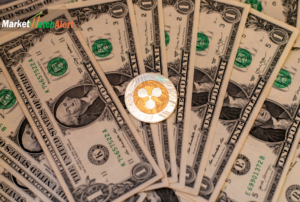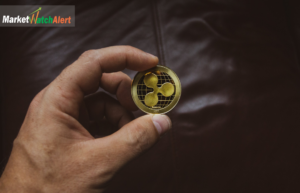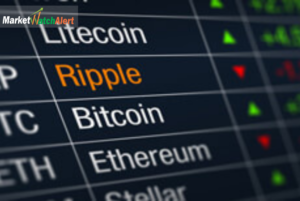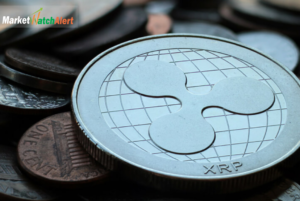Understanding XRP (Ripple): A Complete Guide
Ripple (XRP) is considered the third most popular cryptocurrency after Bitcoin and Ethereum. However, its differences from these other two compete to bridge the gap between banking and international money transfers.
Usually, transfers of funds from one country to another face many constraints.
The fund must pass through several banks in different countries until it arrives at its final destination.

Since some of these banks do not have direct lines between them, this would be very expensive since each bank would charge for this transaction!
Ripple acts as a way to transfer funds from one country to another while avoiding crooked brokers and high transaction fees.
The History of XRP
Ripple, a financial technology (finch) company, was building different products to solve global payment problems through its fund transfer, payment settlement, and exchange system. The company started as Ripplepay, created by software developer Ryan Fugger in 2004. This was before Bitcoin, the world’s top cryptocurrency, took center stage. Ripple was eventually co-founded by Chris Larsen and Jed McCaleb in 2012.
The goal behind Ripple paralleled the vision of Bitcoin creator Satoshi Nakamoto, who aimed to encourage a simpler, faster, and more secure transaction system around the world. The downside of Ripplepay was that it did not depend on the blockchain; instead, it was centralized.
In 2011, McCaleb, David Schwartz and Arthur Britto began developing the XRP ledger as an alternative to Bitcoin’s weaknesses. In 2012, when the XRP ledger went live, it included the native XRP badge to make it easier to operate. This team of engineers was then joined shortly after by Larsen, who currently serves as executive chairman and co-founder of Ripple.
Ripple went through various name changes between 2012 and 2015. Initially, in 2012, it changed its name from Newcoin to OpenCoin. Subsequently, in 2013, it was renamed Ripple Labs. Eventually, in 2015, it underwent a rebranding and morphed into Ripple, as it is widely recognized today.
Ripple And XRP
Although it is often referred to as Ripple, it is crucial to recognize that XRP is an open source digital asset independent of Ripple, which is a technology company. Given its fast, efficient, reliable, carbon-neutral, and rapid distribution, XRP is the technology Ripple deploys in its solutions to help customers achieve compliance.

XRP runs on its decentralized, open-source blockchain, known as the XRP Ledger (XRPL), where transactions are backed by the Ripple Transaction Protocol (RTXP). Unlike many cryptocurrencies, XRP is pre-created, with a maximum badge count of 100 billion. The total quantity of the badge was divided into three phases:
- First, Ripple, the parent company, received 80 billion XRP tokens. To ensure a constant supply of XRP, the company placed 55 billion badges in a held account.
- Then Ripple rookie members and key crew got the remaining 20 billion XRP.
The remaining XRP is being offloaded at a rate of less than 1 billion each month, with the initial offload plan targeting 55 months.
From the beginning, the main concept after XRP was simple and was described as a peer-to-peer trust network. Ripple touts XRP as a faster, cheaper, and more energy-efficient digital badge that can process transactions in moments and consume less energy than various competing cryptos.
Security And Exchange Commession
Most recently, in December 2020, Ripple CEO Brad Garlinghouse informed the public about the SEC’s plan to sue the company. Days recently, in December. On December 22, the SEC filed suit against Ripple for trading XRP as an unlicensed security. The agency claimed that Ripple’s distribution of $1.3 billion in commemorative XRP to its stakeholders violated its law. At the time, XRP was the third largest cryptocurrency by demanded capitalization.
In 2019, some XRP stakeholders also filed suit (filed by XRP investors) before the SEC. This lawsuit was based on the allegation that the Ripple perpetrators “intended to deceive or defraud” their investors.
For the SEC, the argument was whether XRP, Ripple’s native token, is a security – denoting a share in Ripple – or whether it is genuinely a cryptocurrency like Bitcoin. The SEC noted that CEO Garlinghouse and co-founder Larsen traded their XRP during the bull run and raised over $600 million.
The SEC case against Ripple was perfected on July 13, 2023. The court ruled that Ripple violated securities laws by offering unregistered securities to institutional investors, but did not do so when trading XRP on exchanges.
Ripple Advantages
• Quick agreement. sales documentation is incredibly fast. This typically takes four to five seconds, compared to the days it takes banks to complete a line transfer or the flickers, or potentially hours, it takes for Bitcoin transactions to be substantiated.
• Really low shipping costs. The cost to complete a sale on the Ripple network is just 0.00001 XRP or a penny at current rates.
• Protean exchange network. The Ripple network does not only process transactions using XRP. But it can also be used for other edict currencies and cryptocurrencies.
• Used by major tax institutions. Large companies can also use Ripple as a sales platform. Santander and Bank of America are numerous in using this network, demonstrating that it once offers greater waiver of institutional demands than top cryptocurrencies.
Ripple Disadvantages
• Nicely centralized. One of the reasons cryptocurrencies became popular is because they were decentralized, taking control away from big banks and governments. The Ripple system may be nicely centralized due to its validator drop list, which goes against this gospel.
• Large strength pre-mined XRP. Although most of the Ripple force not kept in rotation is stored in escrow, it is possible that large quantities could be introduced at inopportune times, which could impact the value of XRP.
• SEC action against XRP. In December 2020, the SEC filed suit against Ripple, claiming that since it can decide when to release XRP, the company should have registered it as a security. The company denied the allegation.
XRP Is Cryptocurrency
The XRP Ledger was established between 2011 and early 2012 by Jed McCaleb, Arthur Britto and David Schwartz. At the time of its creation, there were 100 billion XRP in existence. In September 2012, Jed and Arthur, along with Chris Larsen, formed Ripple (the company, then called OpenCoinInc.) and decided to give 80 billion XRP to Ripple in exchange for Ripple’s development on the XRP Ledger.

Also since then, the company has been regularly selling XRP, using it to bolster XRP demands improve network liquidity, and encouraging the development of a lesser ecosystem. In 2017, the company placed 55 billion XRP in escrow to ensure that the quantum entering the general force increases predictably for the foreseeable future. Ripple’s XRP market performance point indicates how much XRP the company currently has and is locked in custody.
The role of XRP in the Ripple ecosystem
There is often confusion between XRP commemoration and the Ripple ecosystem; however these are two distinct realities. Ripple is the network used by banks to settle cross-border payments and remittances and facilitates the exchange of edicts and digital currencies.
Any currency or asset can be used to distribute across the Ripple network, which does not require XRP to be served. Nonetheless, XRP provides liquidity when needed, acting as a link between two currencies.

Through On-Demand Liquidity – one of Ripple’s services that uses XRP to provide liquidity in cross-border transactions – RippleNet removes the need for pre-funded accounts. Such an outcome allowed Ripple to partner with remittance players and banking titans like Santander, Bank of America and American Express.
XRP serves as an intermediary medium of exchange between two currencies or networks; However, its origin and its later part caused some problems with the United States. Securities and Exchange Commission (SEC). The SEC filed suit against Ripple in December 2020, based on allegations that the company and its directors immorally sold XRP to investors without first registering it as a security.
Conclusion:
In conclusion, Ripple (XRP) remains the leading cryptocurrency, different from Bitcoin and Ethereum, mainly because it aims to bridge the gap between international banking and money transfers unlike traditional banking systems, which involve many intermediaries and high transaction costs, Ripple being more intended for cross-exchanges. -XRP payments at the border Provide an efficient and cost-effective solution Its journey began with Ripplepay in 2004 in 2010, went through several iterations and evolved to the decentralized XRP as a security.
However, XRP is a valuable digital asset in the Ripple ecosystem, providing liquidity and enabling fast, low-cost transactions around the world. Ongoing legal disputes are happening as hard as the focus will be on digital currencies, but Ripple’s innovations continue to influence the future. financial technologies and payment systems cross borders.
FAQs
Is XRP Coin a good investment?
It depends on your outlook for demand and other cryptocurrencies. It’s a good idea to speak to a duty attorney familiar with cryptocurrencies to see if it suits your investment claims.
Is it safe to invest in XRP?
All cryptocurrency prices are unpredictable and there is a significant risk of loss. It is elegant to trade XRP with a financial advisor to determine the effect it would have on your portfolio and whether it is safe to invest in it or not.
Why is XRP so important?
XRP is really no different from many other cryptocurrencies. It is the native commemoration of a blockchain that works like several others. Its position in demand actually depends on the confidence and palliative of investors, as well as how much they are willing to buy and sell it.
What is ripple?
The Ripple network and its cryptocurrency XRP were launched in 2012. XRP is different from other cryptocurrencies in that it is owned by a single company and is not managed by a decentralized community. This is also not a desire compared to traditional currencies.
Rather, XRP wants to be a sort of mediator currency to enable global trade between any unit of value, like similar cryptocurrencies like Bitcoin to the Euro or other edict currencies.
How does Ripple work?
Indeed, at the technological level, Ripple stands out greatly from other cryptocurrencies. First, the Ripple network does not run on a blockchain. Second, XRP does not calculate mining to create new units of XRP or to validate transactions. Instead, transactions on the Ripple network pass through validation servers, which constantly compare the information they admit and process with a common count.
For this reason, Ripple does not spend as much energy and computing power while allowing for faster sales of pets.
How to buy Ripple (XRP)?
To buy Ripple (XRP), you have to go through a cryptocurrency exchange like Bitpanda and use dictated currencies, for example. euros or United States os, to buy XRP. It is recommended to first familiarize yourself with Ripple price history and the current exchange rate. After purchase, you can view and swipe your Ripple into a digital portmanteau that doubles as a banking app. You also have the option to keep your XRP or resell it through the exchange.
What is the Ripple (XRP) price history?
Like any other cryptocurrency, Ripple is considered a largely unpredictable asset and the price of Ripple tends to change in response to events transmitted in demand. Ripple reached its highest level in January 2018 when the price of XRP reached €3.18. It has also fallen significantly since then and is currently above a daily high of €0.3479 and a daily low of €0.3321.
How to use Ripple?
Ripple’s goal is to use the Internet, blockchain technology and the XRP currency to enable transfers of value across borders in a fast, cost-effective and reliable manner.
In this sense, Ripple mainly aims to deliver results to businesses, governments and institutions. Cross-border payments to enable global plutocrat transfers, crypto liquidity to obtain digital means, and CBDC services are Ripple’s primary use cases. Some invest in XRP like they would in stocks, buying the currency on a crypto exchange and holding or trading it. • Ripple is used as a payment result by banks, governments and institutions.
- Ripple’s primary use cases are cross-border payments, crypto-liquidity, and CBDC.
- XRP can be purchased as an investment on a cryptocurrency exchange and held in a digital portmanteau.
What is XRP commemoration?
Ripple’s native token, XRP, essentially functions as a mediating currency in order to make deals. Their software, XRP Ledger, maintains a limit on the quantum of cryptocurrency that can be created, limiting the total to 100 billion XRP. Of the 100 billion, Ripple initially distributed 55 billion XRP to junkies on forums, while the company sequestered the remaining force to finance its technological development. The XRP Ledger does not charge a sales fee, but it does contain a small amount of XRP that must be put up by the sender to be destroyed and subtracted from the total force.
As of 2019, only one Ripple service (xRapid) uses XRP. Other Ripple services like xVia and xCurrent did not support XRP but could connect to the XRP Ledger. Subsequently, Ripple blended the three services under a common product called RippleNet, which has partnered with over 300 financial firms to date. Through RippleNet, these companies can access “on-demand liquidity” to fund foreign accounts.
This is done by trading XRP for an edict currency on one crypto exchange, also converting those finances into the requested currency on another exchange. Ripple maintains that all of its services and tools, including How to Mine XRP XRP is frequently viewed other than in relation to any other cryptocurrency.
Some don’t consider XRP a cryptocurrency at all, and this is because it has a governance protocol that also doesn’t support proof-of-work (PoW) or proof mining. of Stake (PoS). rather, it uses the RPCA system without relying on mining to validate transactions like other cryptocurrencies, similar to Bitcoin (BTC). The Ripple protocol verifies transactions and maintains network integrity through a system of trusted validators.
However, they must first mine other cryptocurrencies like BTC or Ether (ETH), and also change the trapped or commemorative coin to XRP via an exchange, if the junkies want to earn XRP through the ‘mining. Junkies should be cautious when seeing recommendations on how to mine XRP, as they are most likely scams.
Is XRP a good investment?
There is no guarantee that an investment is safe or suitable for becoming a plutocrat, especially when it comes to cryptocurrencies. Nevertheless, there are many basics that an investor can take into account to estimate whether XRP is a suitable investment or not.
Although its primary goal is to disrupt transnational payments and remittances, XRP is not yet widely used. Tax institutions that have expressed interest in Ripple and its technology are still testing the network. XRP’s issues with the SEC have really stunted its abandonment and wide recognition as a digital currency.
Additionally, many exchanges have restricted XRP trading or stopped it altogether, such as the United States. platforms that have been advised against supporting cryptocurrency until the action is over.
How does Ripple make a plutocrat?
Although the XRP cryptocurrency is decentralized, it is still tied to a private company in Ripple, and Ripple becomes a plutocrat in dealing with XRP, payment fees, earnings on investments, as well as interest on loans. When Ripple sells XRP from their escrow accounts, they make a profit which goes to the Ripple Foundation.
Additionally, sales fees are paid to Ripple, so although the figure is only 10 drops
since no incentives are paid to validators, the figure goes to Ripple. They also offered a loan product in 2020 to access ODL (On-Demand Liquidity) which can be collateralized with XRP. Early on, Ripple was busy acquiring other companies, such as Tranglo, most recently an Asian global payments company.

